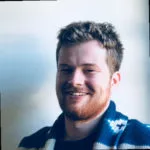Incisal Edge’s third annual ranking of our industry’s top players runs the gamut with an eclectic mix of doctors, executives, innovators, educators and even shamelessly toothy politicians (hi, Beto!) doing more than anyone to move dentistry forward.
THE PAGES AHEAD mark the third consecutive year that Incisal Edge has flexed its mental and reportorial muscles to undertake a ranking of the 32 most influential people who are currently leaving their imprint on the profession that matters so much to all of us. That’s one influencer for every tooth in the human head—and our tally is, as we’ve always acknowledged, inherently subjective.
Dollars matter, for better or worse. (Shocking news, we know.) Market capitalizations, R&D budgets, agency outlays, privately held revenue, perhaps even personal net worth. We also consider organizational weight and—for individuals—the “size of voice”: the volume of their megaphone, the heft of their writing and research, their social-media reach.
Disagree? Stunned or irritated that we left someone off? We’d love to hear from you. We want this list to spark a discussion every year, because only through the airing of ideas in vigorous debate can dentistry continue to evolve. The profession has seen enormous changes in the last decade-plus. It will continue to do so—and we’ll be there, taking stock of dentistry’s most important and influential. Settle in to the chair, won’t you? This year’s version begins now.
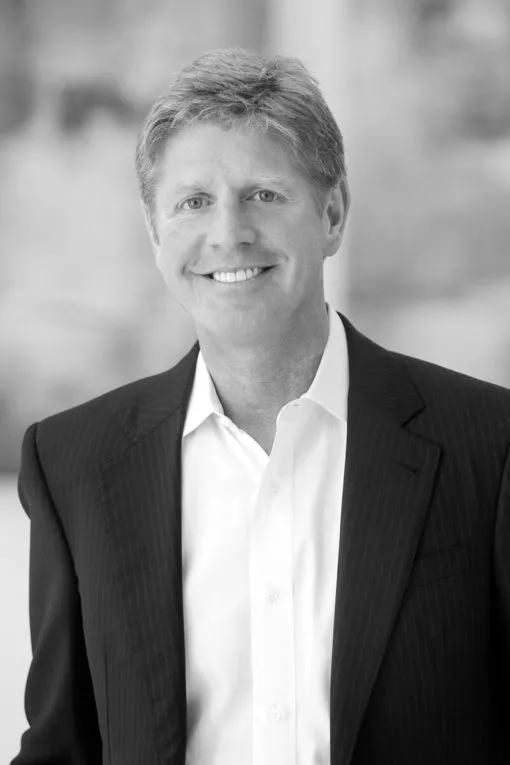 #1 the clear winner
#1 the clear winner
JOSEPH HOGAN (new)
Director, President and CEO, Align Technology
San Jose, California
Align Technology has obtained something close to the holy grail of brand recognition. Invisalign® has become one of the most recognized brands in oral care, a household name like Coca-Cola and Google.
That didn’t happen by accident. Align’s chief executive, Hogan, who has led the 22-year-old firm since 2015, says it spends $100 million annually on consumer marketing—television, digital, social media, events and more. “Our goals,” he tells Incisal Edge, “are to make the Invisalign brand a household name and to motivate consumers to seek Invisalign treatment through a doctor’s office.”
It has paid off. Last year, Align (Benco Dental is a dealer for some of its products) earned $2 billion in revenue and reached the milestone of its 6 millionth Invisalign patient, a teenager in China. That location is significant: Before Ho-gan arrived, Align sometimes struggled with international growth. (“International expansion has been the company’s top priority since 2010,” counters Shirley Stacy, Align’s vice president of corporate communications and investor relations, via email.) Hogan has streamlined its international strategy while maintaining its focus on distributing through orthodontists and dentists. In 2018, it trained 20,000 doctors on how to prescribe and use Invisalign—more than half of them overseas, primarily in Europe and Asia.
We want to be relevant to doctors and their patients—not just today, but tomorrow too.”
The market has certainly rendered its verdict. Align’s stock price over the last five years has shot up more than sixfold; its market capitalization, as of early May, was $26 billion. Revenues have tripled over the same period. The company proudly notes it has 894 patents worldwide, many introduced in just the last decade. Its 3D printing production for its clear aligners, it says, is the largest such operation in the world, with more than 1.6 million patient-ready aligners produced every week. (Total global net revenue from clear aligners and scanners jumped from $1.5 billion to just under $2 billion from 2017 to 2018.)
Yet potential disquiet looms. Despite its strong first-mover advantage, Align is facing a steady roll-off of its early product patents. Analysts at Robert W. Baird estimate that around 20 Align patents will expire every year through 2028. That has pushed the company to bolster its iTero scan-ner line and Invisalign Go, a new, minimally invasive aligner, launched last year, that can treat a wider range of needs.
The company has likewise struggled with how to reach both doctors and patients. Last year, Incisal Edge placed Invisalign’s Jennifer Olson-Wilk at No. 3 on this list for her success on the retail side. This March, though, Align said it was ordered by a California arbitrator to close a dozen Invisalign stores as part of a decision in the legal dispute between Align and Smile Direct Club (see No. 11). The arbitrator found that the stores qualified as a breach of Align’s noncompete agreement with Smile Direct Club, struck when Align began providing some of SDC’s mail-order clear aligners in 2016. “Invisalign stores were an exciting opportunity for Align and our customers, and we’re sorry to close them—but they were a single pilot program,” Hogan says. “Our strategy of educating consumers and getting them to Invisalign providers for treatment hasn’t changed.”
The company has come a long way since its founding in 1997 with a mission to “leverage technology to straighten teeth.” It has developed a product category and created a market. “We want to be relevant to doctors’ practices and to their patients—not just today, but tomorrow too,” Hogan says. The battle is clearly engaged, and Hogan’s influence—like the market itself—seems certain to grow.
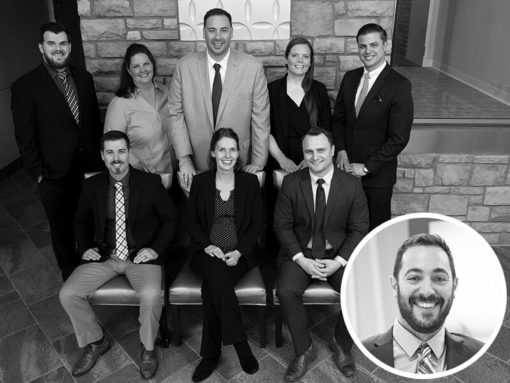
The Verber Dental crew: (Back row, from left) Dr. William Noll, Dr. Becky Fox, Dr, Michael Verber, Dr. Katelyn Hanner, Dr. Joseph Search. (Front row, from left) Dr. Joshua Capozzi, Dr. Kimberly Alfano, Dr. Ryan Rother. Pictured right: Dr. C. Michael Fullem.
#2
the entrepreneurial dentist
The Doctor IS in Business
The classic solo-practice model that has been dentistry’s lodestar for decades is less prevalent than it used to be. In recent years, a host of entrepreneurially inclined doctors have established hybrid practices that are neither fish nor fowl: not solo, not DSO, not fully corporate. How’s business? Worth a closer look, certainly.
By Joshua Coe
The classic solo-practice model that has been dentistry’s lodestar for decades is less prevalent than it used to be. In recent years, a host of entrepreneurially inclined doctors have established hybrid practices that are neither fish nor fowl: not solo, not DSO, not fully corporate. How’s business? Worth a closer look, certainly.
IT IS PERHAPS stretching credulity like a distended ortho rubber band to say that dentists could learn a lot from the 2016 movie “The Founder,” which told the story of Ray Kroc (played by Michael
Keaton), who built McDonald’s from a very modest California burger chain into a global behemoth. What on earth do dentistry and fast-food burgers have in common?
The difference with us: Because we’re the owners making the final decisions and seeing the patients, we can keep patient care first.”
—Dr. Michael Verber
Mastication, for one. But the business side of “The Founder” is of interest: the challenges of scaling up, the pros and cons of franchising, making a profit. Those notions have greater salience today, when the small solo-practice dental model of the popular imagination is changing,
giving way to a mixture of dental service organizations (DSOs) and corporate entities offering economies of scale, perhaps at the cost of personalized patient care.
Today, only about half of dentists are in solo practice, according to the American Dental Association’s Health Policy Institute, down from 65 percent in 1999. In contrast is the rising DSO model, in which a company like Aspen Dental (see No. 10) acts as a support system, providing dentists with space, staff, training and even marketing. With the business worries elsewhere, in theory, the dentist can focus on patient care.
Sounds good—but it’s too restrictive a model, says Dr. Michael Verber, 43, a dentist in Camp Hill, Pennsylvania. “Corporate owns the practice,” he says, noting that even if the doctor has a share of the parent company, it’s not usually a voting stake.
Another prominent DSO, Heartland Dental, is the country’s largest, with 900 “supported offices” and 1,400 “supported dentists.” Heartland was founded by a dentist, Dr. Rick Workman (see No. 10 as well), in 1997, but in March 2018, a majority stake
in it was acquired by legendary Wall Street firm KKR, whose diverse portfolio includes such strange bedfellows as Gibson Guitars and Ultimate Fighting Championship.
As at Heartland, the seven practices under the Verber Dental Group umbrella retain the name of the resident dentist. Unlike Heartland, though, the seven lead doctors are also partners in the group with Dr. Verber himself, who is CEO and president and maintains a controlling share. “We understand that patients want to see dentists, not dental offices,” Dr. Verber says, extolling his business model. “If you’re working for a company whose owners aren’t seeing patients or interacting with patients, what are those owners? They’re stockholders—they’re worried about their quarterly earnings report.”
Every office we’re planning to open is going to be organically grown, where we control the look and the feel.
—Dr. Shalin Patel
Dr. Verber regards his company as an ideal amalgam of the solo-practice and DSO models. “It’s a mesh,” he says, neither poky nor bureaucratic or short-term-obsessed.
Verber Dental Group has just shy of 100 staff supporting him and the other dentists among the seven practices, which have 37 total operatories. That includes four administrative directors who deal with human resources, finance, business and practice operations. “The difference with us is because we’re the owners making the final decisions and seeing the patients, we can keep patient care first,” he says.
How many entrepreneur-dentist models operate across the country? It’s hard to say, if only because the defining characteristics are vague, says DentalMarket IQ’s chief operating officer, Tyrette Hamilton; there could be, she posits, as many as 14,000 such groups nationwide.
“The highest-level trend is industry consolidation,” says Jake Puhl, owner and CEO of the Portland, Oregon–based Dentist Entrepreneur Organization, founded five years ago, which has helped more than 100 doctors scale their practices into larger groups. “It makes sense to take some of the bigger business aspects—billing, HR—and centralize them
so you can just show up and do dentistry.
“We’ve had more success marketing groups that had multiple locations than an individual location,” Puhl, 37, continues. “Once they have the business aspect down, they become more efficient.” One thing of which he’s certain: Dentists need to be in charge—for legal reasons, sure, but also for the purposes of trust. “It’s hard to recruit dentists as a non-dentist. Dentists trust each other a lot more than an outside Wall Street person coming in.”
That’s certainly the case with DECA Dental, a pure DSO based near Dallas, founded a decade ago by three dentists. “Wouldn’t it be cool to own 10 practices?” That’s what DECA partner and chief clinical officer Dr. Shalin Patel, 37, recalls his colleague Dr. Sulman Ahmed, the company founder, saying in DECA’s early days. (Dr. Rodney Alles is the third partner in the venture.) Now, 100 practices and 150 dentists later, they’ve overshot that goal tenfold and have built DECA into one of the largest DSOs in Texas.
“We can look at everything through the eyes of the clinician. I know what it’s like coming out of dental school,” Dr. Patel says. His first job was with a corporate practice. That experience, which his partners shared, spurred DECA’s training program and group model, Dr. Patel says. “We can walk the walk when it comes to doing procedures.”
By 2020, DECA will expand into Florida. “We [initially] couldn’t get doctors to apply to our practices,” Dr. Patel says. “Now we’re getting about 1,200 applications for 30 openings.” He and his partners had noticed that the vast majority of applicants to DECA’s Texas practices were coming from other states. “We went back to the drawing board and said, ‘OK, what state can we find that has similar growth patterns to Texas?’ ” Florida checked all boxes: a growing population, big numbers of dentists, prominent dental schools. DECA will open first in Orlando, then expand across the state as it has in Texas.
For his part, Dr. Verber and his associates—hewing closer to the entrepreneurial model—are keeping things nearby. Every Verber practice, by design, is within five miles of any other. “One of the reasons we’ve done that,” he explains, “is that we like to open a practice when we’re successful enough at one that patients spill over to the next.”
Dr. Verber himself cites Ray Kroc—his business acumen, if not his ethos. “[‘The Founder’] paints him as being kind of a nasty guy,” he says, but his emphasis on real estate has resonated. A new Verber pickup: seven acres in Mechanicsburg, Pennsylvania, where he plans to open a dental campus in 2020 or 2021 with specialists and staff training facilities. Dr. Verber hopes to recruit from area schools as he expands, and the group will add an eighth location this year with 20 operatories. He wants Verber Dental’s growth to be organic but says he envisions a future with 20 practices, including the dental campus. His long-term vision: to build and run a true “dental health system.”
Sometimes, as the late Ray Kroc could attest, that model succeeds beyond one’s wildest imaginings. Entrepreneurial dentists might not have plans as grand as the Golden Arches, of course—but they’re shaping them to fit their preferred business model and taking control. And who knows? Maybe one day Verber Dental Group will have a glowing marquee in front of each outpost, with the legend under the logo reading billions and billions served.
JOSHUA COE is a regular contributor to Incisal Edge.
CORRECTION: The previously published version of this article noted that Dr. Shalin Patel was a cofounder of DECA Dental and that, according to Dr. Patel, the company was growing organically, without acquisitions. In fact, Dr. Patel is partner and chief clinical officer at DECA, and according to company founder Dr. Sulman Ahmed, DECA is open to the idea of acquisitions as a means of growth. We regret the errors.
 #3
#3
the media mogul
HOWARD FARRAN (last year: 5)
Founder, Dentaltown.com, Dentaltown Magazine / Phoenix, Arizona
Before there was FacebooK, there was Dentaltown.com
—and in the two decades since he launched dentistry’s first and still-leading social platform, Dr. Farran’s brainchild has expanded into a video library of some 420 continuing-education courses with a half-million viewers, and a Dentaltown app that puts more than 60 oral-health-related podcasts in 65,000 listeners’ ears. A thousand new users join every month. “All the Baby Boomers like me are on the desktop,” Dr. Farran, 57, explains. “All the Millennials are on the app.”
According to the World Health Organization, there are some 7.5 million dental professionals around the globe. Dentaltown.com boasts nearly a quarter-million registered users, 60 percent of whom are dentists, and 850 more register monthly. One primary reason for its success: anonymity. Dr. Farran remembers Dr. Rella Christensen—wife of Practical Clinical Courses’ Gordon Christensen (see No. 13)—observing, when Dentaltown debuted in 1999, “There has to be a place in dentistry for people to be able to ask a stupid question.”
Dr. Farran still sees a handful of patients each week and is a regular on the global lecture circuit; this year he expects to add Bolivia to the lengthening list of countries in which he has spoken. He also has a podcast, “Dentistry Uncensored”—his “one day a week” hobby, he calls it—on which he has chatted with innumerable industry luminaries. Combine all that with Dentaltown, his now 25-year-old magazine (with which Incisal Edge has a distribution agreement), and you’ve got a doctor-
cum–media mogul whose reach is unequaled in the profession.
 #4
#4
the industry lion
STANLEY BERGMAN (last year: 1)
Chairman and CEO, Henry Schein / Melville, New York
Stanley Bergman has spent 40 of his 69 years with Henry Schein, 30
of them leading the business that has become the world’s largest health care products-and-services provider for dentists and doctors. Last year’s No. 1 is now reengineering the Fortune 500 company he built to double down on its core businesses—and prepare it for his eventual successor.
In February, Schein spun off its animal-health business for $1.1 billion in tax-free proceeds that the company used to pay down debt. The move brings the number of Schein employees to 18,000 (from 22,000), located in 31 countries (down from 34). Animal health contributed about 29 percent of company revenue last year; dental was responsible for half, and other medical for 20 percent. With the veterinary business stripped away, Schein says it expects, based on 2017 pro forma sales of about $9 billion, that its dental business will now contribute 68 percent of company revenue. Other medical will be about 28, and the remaining 4 percent will come from Schein’s technology and value-added services.
Paying down current debt enables Schein to take on more debt down the line for general corporate purposes,
the company says, such as mergers and acquisitions. So far in 2019, Schein has announced or closed on three acquisitions: the January pickup of North American Rescue, a provider of survivability and casualty-care medical products to the U.S. government; and the February and March acquisitions of two practice-management software companies, the Austrian firm Kopfwerk and U.S.-based Lighthouse 360, respectively.
Bergman, who declined to be interviewed, released a statement to Incisal Edge reading, in part, “We intend to grow our dental and medical businesses through continued investments. . . . We have an almost nine-decade history
of reinvention, including 23 years as a public company, delivering consistent results as markets change.”
Who will replace the venerable South Africa–born CEO when he ultimately retires remains an open question. Schein’s president, Jim Breslawski, Bergman’s close friend and ally for four decades, is 65, while chief financial officer Steven Paladino is 61. Both are considered highly capable,
but investors often look for younger leaders in such transitions. Last September, Schein promoted Tim Sullivan, formerly head of its North American dental operations, to executive adviser for Global Dental, responsible for developing consumer strategy and boosting supplier relationships. He reports to Jonathan Koch, senior vice president and CEO of the company’s Global Dental Group. The tea leaves will be read, the entrails studied. Whoever eventually takes over will have to fill the well-worn shoes of one of the most influential executives in dentistry’s history.
#5 (tie)
 the advocates
the advocates
KATHLEEN O’LOUGHLIN (last year: 7)
Executive Director, American Dental Association
Chicago, Illinois
the advocates
MICHAEL GRAHAM (last year: 7)
Senior Vice President, Government and
Public Affairs, American Dental Association
Washington, D.C.
ON THE SUBJECT OF DENTAL-INDUSTRY INFLUENCE, you could perhaps be forgiven for thinking that, well, there’s the American Dental Association, and then there’s everyone else. Dr. O’Loughlin, the organization’s executive director for a decade, and Graham, the industry’s top voice in the halls of Congress since 1995, have been on our 32 Most Influential list all three years—always together, given their vital importance to the ADA and the profession at large.
Advocating for an industry—both for its own sake and (especially) to the nation’s lawmakers—can sometimes be a murky business, of course. It was therefore news—as well as an indication that he’s very good at his job—when CEO Update magazine named Graham its “Lobbyist of the Year” this February. “Mike Graham is a man of integrity who has set the standard of excellence for successful advocacy on behalf of our member dentists and patients,” Dr. O’Loughlin said at the time. “His passion and leadership will continue to drive our advocacy efforts forward and help dentists to achieve great things.”
The same could be said of Dr. O’Loughlin herself, who has been a factor in many of the ADA’s top initiatives the past year, including a letter she and ADA president Joseph Crowley wrote to the House Ways and Means Subcommittee imploring Congress to expand health savings accounts and flexible spending accounts, on the assumption that relaxed limits on such accounts would lead more people to be able to focus on their oral health. Dr. O’Loughlin is also a tireless advocate for women
in dentistry, having been the first female dental-school class president when she attended Tufts.
The variety of issues the ADA concerns itself with is dizzying. Diet and nutrition, water fluoridation, the opioid epidemic, dental-student debt, regulatory reform, tobacco use, issues in the states, access to care, Medicare and Medicaid policy . . . and that hardy perennial, health-care reform. There are many others. It’s little wonder that in March 2017 the organization opened ADA House, a lovely yellow townhome near Capitol Hill. “ADA House,” the group notes, “is another way for ADA members to engage in the political process when visiting our nation’s capital.” Dentistry begins at home, after all. Kathleen O’Loughlin and Michael Graham will ensure it continues to do so.
 #6
#6
the merger whisperer
DON CASEY (last year: One to Watch)
CEO, Dentsply Sirona / York, Pennsylvania
In late 2017, only two years after the $14.5 billion merger of Dentsply International and Sirona Dental, the combined entity’s chief executive, executive chairman and president were all pushed out.
Into that ominous environment stepped Casey, who took over as chief executive in February 2018. Casey had come from Cardinal Health, where he led the medical segment, and was previously chairman of Johnson & Johnson’s comprehensive-care group. At Dentsply Sirona, he was handed the sizable task of finally integrating the newly joined companies. That job was always going to take time, he says, but in the wake of the merger Dentsply Sirona
had lost “focus on our customers.”
“My priority was to change this,” he tells Incisal Edge. “We’ve made sure we’ve grown together. We are now a
fully integrated company again, which is fully focused on the customer.” As one example, he points to a new group that combined Sirona’s legacy CAD/CAM products with Dentsply’s legacy orthodontics. “The idea is that there should be a seamless opportunity to do digital dentistry all the way from taking an image to developing a treatment plan and providing, in our case, clear aligners,” Casey says. “As opposed to ortho sitting over here and Cerec sitting over there, as before, they now operate as one group.”
Already in 2019, the company has launched major product innovations—Primescan, SureSmile Aligner and Surefil One, to name three of the most prominent—all of which debuted ahead of schedule, Casey says. It’s also conducting a “sales-force effectiveness program” across the United States.
Is it all working? The company reported in March that revenues for fiscal year 2019 are estimated to be roughly $4 billion, with sales growth of between 4 and 5 percent. Casey’s influence is on the rise as he works to right this surprisingly troubled twosome—and the months ahead will go a long way toward answering all those lingering questions.
 #7
#7
the researcher
MARTHA SOMERMAN (last year: 4)
Director, National Institute of Dental
and Craniofacial Research / Bethesda, Maryland
The NIDCR’s director reigns supreme over a fiscal-2019 budget of $462 million, 81 percent of which directly funds oral-health research. Dr. Somerman holds sway over so much financing, in fact, that the National Institutes of Health (the NIDCR’s parent) requires the Laboratory of Oral Connective Tissue Biology, which she oversees, to exist under the authority of a separate institute.
NIDCR leverages a nationwide network of researchers who supervise some 60,000 participants in 55 ongoing longitudinal studies. Among other advances, this has yielded a breakthrough link between periodontitis and rheumatoid arthritis, innovations in electric-toothbrush technology and proposals for improved dental care for patients on the autism spectrum.
Still, the area Dr. Somerman herself is most excited about is autotherapy, or regenerative medicine. “For any of you going into endodontics, this is going to be one of the future areas [in which] we’re going to have a lot of innovation, maybe in the next five years,” she told a room packed with dental students at the University of Southern California School of Dentistry’s 2018 Research Day. Two potential NIDCR innovations in that regard: a new strain of streptococcus that could prevent cavities, and dental fillings that use stem cells to restore pulp and dentin in teeth.
Dr. Somerman must of course justify her outlay to Congress every year. The Trump administration has proposed a $64 million reduction in funding for the NIDCR for the 2020 fiscal year. She’s a seasoned veteran of bureaucratic tussles, though. It would be no surprise if she ultimately gets full funding restored—or even a slight increase.
 #8
#8
the expansionist
PETER DUBOIS (last year: 9)
Executive Director, California Dental Association
Sacramento, California
At the apex of the California Dental Association, the largest such state association in the country, for nearly two decades, DuBois commands a powerful, ever-expanding oral-health empire in the biggest state. On the distribution front, the Dentists’ Supply Company (TDSC), the CDA’s
online supply business, expanded to 11 more states this past year, at last bringing its wares to all 50.
Through TDSC, DuBois’s organization is expanding
its reach east. Last April, the site debuted in Texas, Illinois and New York; over the next two months, it entered the remaining states it hadn’t previously covered. “We’re very excited about it,” DuBois says. “We’ve seen a very positive response from the states—in many instances they see it
as a crusade by organized dentistry to deliver the best
possible value for small-equipment supplies to their
members, because in order to participate on the site,
you have to be an organized member of dentistry.”
The CDA’s dentist-insurance arm, TDIC, meanwhile, acquired both DBIC and Nordic, bringing its total policy-holders to 24,000 and making it the dominant liability-insurance player in the field. Closer to home, the CDA represents more than 27,000 Golden State dentists. It has supported bills that would make silver diamine fluoride a MediCal-covered benefit and has battled soft-drink companies. “Whether it’s access or financial structure or clinical technology, we don’t want to be reactive,” DuBois says. “We pride ourselves on being proactive—a necessity at a time like this, when so many dynamics are at work, and therefore so many pressures being brought to bear on dentists, their team members and their patients.”
 #9
#9
the human edison award
JIM GLIDEWELL (last year: 6)
President and CEO, Glidewell Laboratories
Newport Beach, California
The only chief executive on this list who has held his job longer than Henry Schein’s Stanley Bergman (see No. 4) is the head of Glidewell Laboratories, founded by its namesake in his California kitchen in 1970. It’s the largest privately held dental laboratory in the world, and Glidewell, 73, remains deeply involved in its transformation from a small dental lab to a major technology company.
Glidewell is well-known for its line of BruxZir Solid Zirconia crowns, considered the industry standard for crowns that look like natural teeth but are as strong as cast gold. In the decade since BruxZir’s debut, Glidewell (the company) has become one of the planet’s largest manufacturers of
dental zirconia.
An early adopter
of CAD/CAM technology, Glidewell now sells two models of milling machines that dentists can keep close at hand—the TS150 mill and the Fastmill.io in-office unit—enabling them to make a BruxZir crown while the patient waits. Following the lead of Amazon and its “dash” buttons, perhaps, Glidewell also recently debuted its “IoT” button, which doctors
can press to automatically schedule their toothmaking cases, print shipping labels and arrange for mail pickup within a few hours. Dentistry has changed immeasurably
in 50 years—and Glidewell has been there every
step of the way.
#10 (tie – the consolidators)
 RICK WORKMAN
RICK WORKMAN
(last year: 8)
Founder and Executive
Chairman, Heartland Dental
Effingham, Illinois
 ROBERT FONTANA
ROBERT FONTANA
(last year: 11)
CEO, Aspen Dental
East Syracuse, New York
 STEVE THORNE
STEVE THORNE
(last year: 15)
Founder and CEO,
Pacific Dental Services
Irvine, California
These three LEADERS of dental service organizations head the three largest DSOs in the U.S., transforming the industry by offering turnkey dental offices to doctors young and older who don’t want all the hassle of running one themselves.
Dr. Workman founded Heartland Dental in 1997, and as of the end of last year, it had grown to more than 11,000 staffers at 900 offices supporting some 1,400 dentists. Fontana founded Aspen Dental the following year; it now boasts 1,000 affiliated doctors, close to 10,000 employees and 750 locations, including an Aspen Dental office that opened in a Florida Walgreens store last year—an outpost that includes an on-site dental lab. It plans to augment its partnership with Walgreens this year.
Thorne’s Pacific Dental Services, for its part, has grown rapidly of late, from 400 locations in 2016 to some 700 at the end
of last year. Size isn’t everything, of course, and this powerful trio have struggled at times with differentiating their business models. As investors continue to search for firm indications that any of the “Big 3” might go public, though, their size can be thought of as a rough proxy for their considerable market heft.
 #11
#11
the consumerists
ALEX FENKELL & JORDAN KATZMAN (new)
Cofounders, Smile Direct Club / Nashville, Tennessee
Founded in 2013 by these childhood friends, the orthodontic startup Smile Direct Club has taken off of late. After securing
a $380 million investment last October from a notable private-equity group comprising Clayton, Dubilier & Rice, Kleiner Perkins and Spark Capital, the company was valued at $3.2 billion.
It’s using that money to expand quickly, recently announcing plans to invest $217 million to hire more than 2,000 employees by 2024. (At the start of 2019, SDC employed around 3,200.) The company brought in a reported $400 million in revenue
in 2018, a figure it expects to double this year, and have sold a half-million mail-order clear aligners to date.
SDC’s product is enviably simple: For a $250 down payment and $80 a month for 24 months (or $1,850 upfront), it mails consumers plastic aligners, saving them the hassle of regular orthodontist visits. It’s 50 to 60 percent cheaper than traditional braces, SDC says. It also uses teledentistry to enable patients to check in with an orthodontist every three months, and at the conclusion of the treatment plan, it 3D-prints a retainer to keep that smile in place.
A legal dispute with Align Technology (see No. 1) was recently resolved largely in SDC’s favor. But it’s operating in a highly competitive market, and success—as this brash upstart enters adolescence—is by no means assured.
 #12
#12
the valedictorian
MARCO GADOLA (last year: 2)
CEO, Straumann
Basel, Switzerland
After a seven-year run of record profits and steady expansion, Straumann CEO Gadola announced he’ll be stepping down from the top job at the end of this year and taking a seat on the company’s board.
He’ll be replaced by Guillaume Daniellot, a 12-year veteran of Straumann who currently leads sales for the company’s North America operations, a key growth area for the Swiss maker of dental implants, CAD/CAM prosthetics, biomaterials and digital restorative equipment. “If the CEO is supposed to stay until retirement [age], I don’t think that would be the right thing for the organization,” Gadola, 55, says in a video released by Straumann. (Benco Dental is a dealer for some Straumann products.)
He knows the industry inside-out,” Marco Gadola says of his successor. “Everything he’s done, he’s done successfully.”
His succession plan has been some time in the making. The company selected Daniellot, who started with Straumann in his native France, after interviewing candidates for nearly two years. (He was previously head of operations for France and Western Europe.)
Gadola knows from success: During his tenure,
Straumann began making clear aligners, new software
and oral scanners, while also expanding to burgeoning markets in India and Turkey. Its stock price has risen nearly sevenfold since 2013, and sales have doubled to $1.1 billion. The company says it hopes Daniellot can boost that to $5 billion within a decade. We—and the rest of a Gadola-admiring industry—will be watching.
 #13
#13
GORDON CHRISTENSEN
(last year: 13)
Founder and CEO, Practical
Clinical Courses / Provo, Utah
The ageless prosthodontist Dr. Christensen,
82, continues to average 80 to 100 courses every year
for groups ranging from as few as 30 for hands-on clinical classes to up to 1,500 at larger get-togethers. Over the last four decades, meanwhile, the Clinicians Report Foundation—which he cofounded in 1976 with his wife and business partner, Dr. Rella Christensen, a highly respected dental researcher in her own right—has built an unmatched reputation as dentistry’s Consumer Reports, with product reviews that reach an estimated 100,000 readers in 85 countries. The foundation tests the dental products of close to 1,000 brands every year, releasing its findings
each month.
Dr. Gordon Christensen’s Clinicians Report has built an unmatched reputation.
The workload never slows; every year Dr. Christensen and his organization receive more than 50,000 queries, which he uses to bolster the offerings of his Practical
Clinical Courses. “We are fortunate,” he says of the pace he’s been able to maintain. A grateful industry is, too.
#14
the lawmakers
JEFF VAN DREW (D-NJ), MIKE SIMPSON (R-ID), PAUL GOSAR (R-AZ), BRIAN BABIN (R-TX), DREW FERGUSON (R-GA) (new)
U.S. Representatives / Washington, D.C.
MOVE OVER, MR. SMITH: There’s a caucus for seemingly everything and everyone in Washington these days, so why not a “dentist caucus”? For the first time in history, so far as Incisal Edge can determine, five general dentists—four Republicans, one Democrat—currently sit in the House of Representatives, conducting the people’s business teeth-first in the 116th Congress. The American Dental Political Action Committee (ADPAC) supported the 2018 campaigns of all five, according to the American Dental Association.
Last November, Dr. Ferguson was appointed Chief Deputy Whip by Rep. Steve Scalise, the Louisiana Republican who is House Minority Whip. Dentistry was the perfect preparation for serving in Congress, Dr. Ferguson told Dentistry Today. “The biggest lesson of my first term,” he quipped, “is that pulling teeth is a whole lot easier than getting a piece of legislation to President Trump’s desk.”
Pulling teeth is a whole
lot easier than getting a
piece of legislation to President Trump’s desk.”
Getting themselves elected (in Dr. Van Drew’s case) or reelected (Dr. Simpson is in his eleventh term; Dr. Gosar in his fifth; Dr. Babin in his third; and Dr. Ferguson in his second) wasn’t without some drama. During the 2018 campaign, all six of Dr. Gosar’s siblings publicly endorsed his Democratic challenger. Their repudiation centered on various claims Dr. Gosar has made throughout his tenure, including unfounded comments about prominent political
donor George Soros having funded the August 2017 white-nationalist rallies in Charlottesville, Virginia.
Dr. Gosar held his seat regardless, and with Dr. Van Drew’s election to represent New Jersey’s 2nd district, the dental caucus in Washington now numbers five—and, one hopes, the voice of the industry will boom more resonantly than ever under the Congressional dome.
#15
the independent
AMIR AGHDAEI (last year: 10)
Group Executive & Vice President, Danaher / Washington, D.C. and Portland, Oregon
At some point in the second half of this year, Aghdaei
will go from being the president of the dental business within Danaher to president and CEO of his own dental business, spun off by Danaher into a separate publicly traded company called Envista. It’s a big transition, one that could give even the most grounded executive pause. But it has been more than a year in the making—the move was announced last summer—and Danaher insists it’s ready.
Aghdaei, 59, has led Danaher’s dental platform since 2015. The business generated $3 billion in revenue in 2017, and includes KaVo Kerr, Ormco and Nobel Biocare—all of which will transition under the Envista umbrella later this year. The group’s 12,000 employees will continue making products for general dentistry, peridontics, endodontics, orthodontics and oral surgery, and will likely start making new ones as well. Aghdaei has overseen a period of significant investment in product development, a move that Danaher executives—busy no doubt with their $21.4 billion acquisition in February of troubled General Electric’s biopharma unit—say better positions Envista to stand on its own two feet soon. The company debuted 20 new products and technologies in recent months, including two new implant
service technologies and upgraded 3D-imaging software. (Benco Dental is a dealer for some Danaher products.)
#16
the research specialists
CAPTAIN BRUCE DYE & JUDITH ALBINO (new)
Co-Directors, 2020 U.S. Surgeon General’s
Report on Oral Health / Washington, D.C.
It has beeN NEARLY 20 years since the first U.S. Surgeon General’s report on oral health articulated the vital connection between oral health and systemic well-being. That report brought attention and inspired millions of dollars of investment into oral-health research and education.
Much has changed in the years since, and Bruce Dye and Judith Albino, a professor of public health at the University of Colorado, have been tasked with leading the research for a new such report, due next year. During a January presentation highlighting some of the duo’s early findings, Dye—a dental epidemiology officer at the National Institute of Dental and Craniofacial Research (see No. 9) was unequivocal: “We need a new report to underscore the critical nature of poor oral health as a public health issue,” he said. “We’ve seen substantial improvements in younger children, but not so much in older youths and adults. We’ve been unable to alter the natural history of caries in a way that significantly increases the number of Americans experiencing no dental decay in their lifetime.”
On the flip side, Dye observed that complete tooth loss among senior citizens has fallen by nearly half since the previous report was published. Total dental expenditures have climbed, from $85 billion in 2000 to $124 billion in 2016 (in constant dollars). Expect many more such nuggets when the duo release their much-awaited report.
 #17
#17
the owner-operator
JOHN GULON (last year: 25)
Managing Partner, Park Dental
Eden Prairie, Minnesota
Park Dental is not your
average dental service
organization. It is, rather, an employee-owned group practice in which every dentist—like partners at a law firm—has a stake in the business and a say in what happens. Led by Dr. Gulon since 2005—he has been with the company since 1987—Park Dental also concerns itself with whole-body health: Its dentists screen patients for high blood pressure, among other things, referring hundreds annually to local physicians for other possible ailments.
Last spring, too, Park’s dentists committed to reducing the number of opioids they prescribe. This move resulted
in a 48 percent reduction in the number of prescribed pills. “As leaders in oral health, we are committed to improving lives, raising awareness and taking proactive steps to deal with one of today’s major health issues,” Dr. Gulon has said. “[This] is a significant part of that commitment.”
Park Dental’s approach is proving attractive to clinicians. Through a series of acquisitions and partnerships, Park Dental clinics—located throughout the Minneapolis area and western Wisconsin—nearly doubled in number, from 23 in 2012 to 45 in 2017.
 #18
#18
the peerless pedagogue
MICHAEL COHEN (last year: 16)
Founder, Seattle Study Club / Seattle, Washington
DR. COHEN HAS LONG BEEN lauded for his work, but in 2018 he really cleaned up,
winning the Pierre Fauchard Academy Gold Medal and the P-I Brånemark Award for
Lifetime Achievement in Dentistry—each in recognition of his oral-health “university
without walls,” the Seattle Study Club.
Going into 2020, we’ll be opening the Business Academy to the general dentist population outside of our clubs.”
Expecting to have 275 clubs with as many as 7,000 members worldwide by the end of this year, SSC keeps getting bigger—including in the desirable growth market of China (32 billion teeth!), which now has eight SSC outposts. This year, Dr. Cohen says, the organization will be building out its educational program into new areas of dentistry, helping practitioners become “more complete clinicians.” That includes SSC’s new Business Academy, which offers members “game-changing business training” through videos and other supplemental tools to help young dentists—who might not have received much of this kind of education in dental school—manage their practices. “Going into 2020,” Dr. Cohen adds, “we’ll be opening this up to the general-dentist population outside our clubs.”
Also coming: Lab Lodge, which will offer continuing ed to technicians in independent labs. It’s all part of this consummate award winner’s goal to promote dental knowledge worldwide. “We’re spreading out in multiple directions,” he says.
 #19
#19
the lab technologist
ANTON WOOLF (last year: 21)
CEO, Argen
San Diego, California
“Family feel, global ambitions”: That’s the headline atop a LinkedIn listing for jobs at Argen, the company Woolf’s parents founded in Johannesburg, South Africa, more than 50 years ago, and which he now heads. Under his 19-year leadership, the business has grown from 10 employees to 500, with offices in Canada, China, Germany and the U.K. in addition to its Southern California headquarters. Woolf has made strategic investments in 3D printing, milling and ceramics, enabling Argen to move beyond being just the world’s largest producer of dental alloy; it’s now also a big player in both 3D printing and ceramics.
Those are big achievements for a firm that aims to be the third-party restoration provider for dental labs of any size. Woolf says the $10 million Argen has invested in technology over the last decade is responsible for that, giving it the ability to work seamlessly even with small and medium sized labs.
All told, Argen now runs roughly 100 3Shape scanners, Selective Laser Melting machines, milling machines and wax and model printers. We’ll have to take the company’s word on the “family feel” part, but the global ambitions certainly seem evident enough.
 #20
#20
the crusader
CRISTIN KEARNS (new)
Assistant Professor, University of California San Francisco School of Dentistry / San Francisco, California
A Dentist-turned-journalist and academic, Dr. Kearns has been studying the Sugar Research Foundation—the sugar lobby that is extremely active in Washington— for a decade, digging up documents pertaining to its work and finding that its mission might not be so sweet. Consider her dentistry’s Erin Brockovich, perhaps.
Sugar Research’s first scientific director, Robert Hockett, for ex- ample, later went to work for the tobacco industry to “cast doubt on the science linking smoking to cancer,” according to a 1954 letter Dr. Kearns unearthed. “The tobacco industry,” she observes mordantly, “may have learned some of its tactics from the sugar industry.”
A dentist and former dental director of a public-health clinic in Denver, Dr. Kearns is now at UCSF working to uncover how the sugar trade group has worked “for at least a century” to convince the public (and dentists) “that their product isn’t harmful.”
The lobby, she says, “has worked to influence the types of research questions that our federal agencies pursue, withheld important knowledge about how our bodies metabolize sugar and skewed research to exonerate their products.”
Dr. Kearns has published her findings in Mother Jones magazine and a number of academic journals. She also recently launched the UCSF Food Industry Documents Archive, which is modeled after the Truth Tobacco Industry Documents digital record. “The sugar industry knows far more about how to keep people eating sugar than we do about helping them cut back,” she says. Her archive, she hopes, will inspire people to make informed decisions about their consumption of this ubiquitous, problematic sweet.
 #21
#21
the outsider
SEBASTIAN ARANA
(last year: One to Watch)
CEO, 3M / St. Paul, Minnesota
A year or so agO, Arana took over as head of 3M’s oral-care business from James Ingebrand, a 34-year company veteran who retired last April. Arana brings an international background and perspective to the chief executive’s role, having previously led 3M health departments in Chile and Poland over his nearly 20-year career. Fittingly, he has spent a substantial amount of time during his first months on the job traveling, engaged in a global “listening tour” with 3M employees.
He recently penned a piece in 3M’s ortho magazine, Innova, in which he directly addressed the company’s orthodontist customers. Highlighting its Clar-ity Aligners, Oral Care portal and new Clarity Ultra Self-Ligating Brackets, he wrote that “we have continued to invest, develop and promote the latest technology that will allow you to optimize the products we provide.” In other words: mega-conglomerate 3M will work with clinicians to provide them with a new array of products that will help promote bespoke patient treatments. James Ingebrand was a 3M lifer, but Arana is clearly laying the groundwork for major impact of his own.
 #22
#22
the stock picker
JEFF JOHNSON (new)
Senior Equity Research Analyst, Robert W. Baird & Co.
Milwaukee, Wisconsin
Originally an optometrist with the Massachusetts Eye & Ear Infirmary’s Refractive Surgery Services, Johnson came to recognize that he had a knack for stock analysis. In the early 2000s, he followed that notion to Northwestern University, where he got an MBA and later landed a job with Baird.
Over the past decade and a half, Johnson has accrued hundreds of industry contacts who offer insider info on what they’re seeing on the ground. He covers some implant specialists but in general keeps his eye trained on the ebb and flow of general dentistry and orthodontics via surveys of as many as 200 dentists every quarter. “It’s a lot of work, and a lot of digging through the numbers,” Johnson says, “trying to see where there’s a difference between what we believe and what the consensus view is.”
Perceptive dental-industry analysis is “a lot of work and a lot of digging,” Johnson says.
His analysis factors in patients’ disposable income, dentists’ reimbursement rates, the number of employers who offer dental insurance and many more. He also closely tracks the major dental-supply companies. One stand-alone oral-health company he says will be important to watch in the year ahead: Danaher Corporation (headed by No. 15, Amir Aghdaei), which will go public later in 2019.
ONES TO WATCH
A handful of comers to keep your eye on in 2019—and to look for on this list in 2020.
A.J. Caffentzis, Henry Schein
Appointed last fall to replace Tim Sullivan as Henry Schein’s president of North American Dental Distribution. Sullivan had held that position since 1998; he became executive adviser of the firm’s Global Dental Group.
Joseph Cavaretta, Dental Whale Services
A sales veteran at Henry Schein for 17 years, Cavaretta departed in February to take the helm as president of scrappy startup Dental Whale, a support-services provider for practices nationwide. “I wanted to do something new and different that I felt was needed,” he tells Incisal Edge.
Guillaume Daniellot, Straumann
Famed CEO Marco Gadola (see No. 12) is stepping down from the lead role (and onto the company’s board); Daniellot will take over in 2020 from a very tough act to follow.
Diego Gabathuler, Ivoclar Vivadent
Effective this July 1, Gabathuler will become Ivoclar’s new CEO, succeeding Robert Ganley, who has helmed the company since 2003. Ivoclar is one of the largest family-owned dental companies; Gabathuler’s ascent marks a major transition. Will it be smooth?
Jonathan Koch, Henry Schein
Speculation is rampant about who, who, who will take over as CEO of Henry Schein when Stanley Bergman (see No. 4) retires. Koch, 43, the senior vice president and CEO of the company’s Global Dental Group, is younger than the competition and hotly tipped to be the pick. Stay tuned.
Eric Shirley, Patterson Dental
Shirley was brought on in February to be president of Patterson’s Dental Division. He brings more than a quarter-century of experience to the job, including stints at Midmark and Dentsply.
Jason Spencer, DCI
Just since 2015, DCI (owned by the Spencer family for 30 years) has created an entire line of dental equipment, DCI Edge, from scratch. It’s innovating in areas—operatory ergonomics, lighting, integrated technology—in which other, less nimble companies are having trouble or are ignoring outright.
 #23
#23
the professor
JOHN KOIS (last year: 18)
Founder & Director, the Kois Center
Seattle, Washington
For more than two decadeS, the Kois Center in Seattle has been educating dentists with its signature brand of science-based dental inquiry and courses on esthetics, implants, restorations and more. Many graduates of his nine-course curriculum have been featured in the pages of Incisal Edge over the years, and Dr. Kois himself is one of a small handful who have appeared on all three iterations of the 32 Most Influential list.
A renowned instructor, Dr. Kois can boast educational credentials of his own that are top-notch as well: a DMD from the University of Penn- sylvania School of Dental Medicine, a certificate in periodontal prosth- odontics with a master of science in dentistry from the University of Washington School of Dentistry, and he’s also an affiliate professor in the graduate restorative program at the University of Washington.
Though he has recently pared back his demanding lecture schedule—he formerly traveled widely to deliver 50 or more talks a year—Dr. Kois continues to research and publish his findings in a variety of industry journals.
 #24
#24
the charcoal toothpaste evangelist
LAURYN EVARTS (new)
Writer, lifestyle maven / TheSkinnyConfidential.com
IT SEEMS SAFE to say that neither most dental professionals nor the American Dental Association promotes blackening your pearly whites with sleekly packaged chimney soot—so instead promotion of the hottest new lifestyle trend falls to people like Evarts, the exuberant one-woman online content machine known as TheSkinnyConfidential.
With nearly 1 million followers on Instagram alone—the ADA has 11,000—Evarts has become the most prominent exponent of the pur- ported benefits of charcoal, including toothpaste, which (you might have noticed) is everywhere lately.
“Here’s the deal,” Evarts has written. “My teeth are SO much whiter. NO JOKE. Need some research on why? Here’s a little story for ya.” She then linked to a food blog that claims, of charcoal, “This majestical [sic] substance helps to heal all colon diseases and greatly benefits the intestines.”
And the industry has listened: Both Oral-B (which offers charcoal- infused black-bristle toothbrushes) and Colgate (which sells a paste called “Charcoal Deep”) have gotten onboard with the craze.
The science is unsettled, to say the least; in 2017 the Journal of the American Dental Associa- tion reviewed 118 charcoal-related studies and found them wanting for evidence—putting it mildly—that the black stuff makes for great dentifrice. Still, the online wellness brigades are a mighty force, and at the head of the battalion is Evarts, raving from her San Diego redoubt about its benefits. “Charcoal toothpaste exists, guys,” she wrote, “and every other toothpaste should F off.” Dentists are officially on notice.
 #25
#25
the connector (with cheese)
PAUL GOODMAN (new)
Founder, Dental Nachos
Philadelphia, Pennsylvania
Dr. Goodman’s LOFTY, if somewhat opaque, goal: to “have dentists be nice to each other and not dislike each other.”
This, he says, was the purpose animating his first professional networking venture, the Rising Dentists Study Club. “I didn’t understand why dentists just didn’t communicate well,” the doctor says. “I know now that it’s because dental school creates a very toxic environment—the Dental Hunger Games, [in which] you take nice young people who are bright, motivated and happy, and you just kind of ruin them.”
The gregarious 42-year-old went on to found the “Philadelphia Secret-ish Dental Sharing Group” and the appetizingly named Dental Nachos continuing-ed group. (“I’m sort of ‘nacho’ ordinary in that I like working with a lot of dentists,” he jokes.)
Since debuting on Facebook in 2017, Dental Nachos has become a frequently visited forum for more than 14,000 dentists. With roughly 800 new posts each month, the group offers doctors an omnium-gatherum of the profession that includes a study club, podcast, blog, networking and one-on-one coaching from Dr. Goodman. He does about 60 speaking events every year, he says, and has offered professional practice appraisal to more than 100 dentists. Current communication methods are essential to what he does, he happily admits. “I could never do this without smartphones, text messaging, Facebook,” he says. “Sometimes it can take you just 14 seconds to type a comment or a response to help another dentist, which is just awesome.”
#26
the instructor
FRANK SPEAR (last year: 23)
Founder & Director, Spear Education
Scottsdale, Arizona; Seattle, Washington
TWENTY-FIVE years on, Spear Education contin- ues to be one of dental’s continuing-ed leaders.
Its renowned courses cover the most salient issues, many of them non- medical, facing today’s dentists—things older docs never had to think about: how to produce effective email newsletters, for ex- ample, or choose one’s first 3D printer.
Spear’s lauded, comprehensive clinical workshops, meanwhile, focus on esthetic and endodontist specialties, and they continue to add new materials that shed light on how to work with click-jaw joints, recognize airway and sleep disorders and handle posterior composite techniques.
Dr. Spear began practic- ing dentistry in 1979 and founded his eponymous company in 1995. Now based in Scottsdale, Arizona, Spear Education produces its coursework and materials in a variety of forms: workshops, seminars, lectures, online videos, live-patient courses, case materials, DVDs and more.
It also offers study clubs, on-campus learning and consulting services. There will forever remain a need to instruct the doctors of tomorrow in the latest techniques. Spear Education remains one of the best means by which to do so.
#27
the dealmaker
G. DEWEY MARTINELLI (last year: 22)
Managing Director for Health Care,
William Blair & Company
Chicago, Illinois
As perhaps dentistry’s most prominent M&A specialist, Martinelli can draw on a wealth of insider knowledge about consolidation and other trends that are doing so much to reshape the industry today. A managing director who has been with William Blair for two decades, Martinelli advised, for example, on Henry Schein’s 2017 acquisition of Southern Anesthesia + Surgi- cal, which he had sold once before—in 2012, to the health-care private-equity firm Beecken Petty O’Keefe & Company.
DSOs will continue to be the most active space for deals.”
Martinelli also advised Texas–based orthodontic provider Smile Doctors in 2017, when Linden Capital Partners made an undisclosed investment in it. Smile Doctors is a specialty platform, of course, but Martinelli says that deal was a harbinger of what’s to come. “While it is maturing, there is still a super-fragmented industry” ripe for consolidation, he says. “DSOs will continue to be the most active space for deals.” In other words, follow the money. You’ll likely encounter Martinelli at some point along the way.
#28 (tie)
the model breakers
JUSTIN JOFFE (last year: 31)
CEO, HENRY the Dentist / Livingston, New Jersey
HITESH TOLANI (new)
Founder & CEO, Virtudent / Newton, Massachusetts
Millennials are all grown up, and their predilection for convenience is transforming American health care. What some see as a maddening challenge, others see as opportunity. Take Virtudent and HENRY the Dentist, for example—which come at the provision of dentistry from opposite directions. HENRY is a mobile practice, driving to corporate offices across New Jersey and Pennsylvania. Virtudent, by contrast, brings oral hygienists directly into company space—a spare conference room, say—for up to several days at a time. HENRY offers basic services—cleanings, fillings and more—while Virtudent itself focuses strictly on preventive care through its partner dentists. “We believe in the value of separating diagnosis and treatment,” says Debbie Kenny, Virtudent’s Vice President of Marketing and Customer Success. “We want to be seen as cooperating with dentists, not competing with them.”
Dr. Tolani founded Virtudent in 2014 and aligns itself with dentists who practice near the companies where Virtudent sets up shop so that patients who need more advanced treatment can find their way into those doctors’ chairs. “The mission is to increase access to care and find ways to make it super-simple to allow people to reach dental care,” he says. To that end, Virtudent has raised more than $13 million in funding and this past year expanded beyond its New England core—serving Massachusetts, New Hampshire and Rhode Island—by opening offices in New York City and Dallas. It’s eyeing nine additional markets for expansion as well.
HENRY, for its part, closed on $10 million in venture-capital investments this spring and, Joffe says, is raising more to fund expansion to at least nine more states by 2020. HENRY and Virtudent offer different solutions to the problem of improving access to care—HENRY doesn’t refer patients to other practitioners upon treating them. Model disruption, though, is the buzzword.
CORRECTION: An earlier version of this story noted that Virtudent offered patients “basic services such as cleanings, exams, X-rays, fillings and more.” Virtudent in fact is focused entirely on preventive care and does not offer dental treatments of any kind. Incisal Edge regrets the error.
 #29
#29
the data scientist
MARKO VUJICIC (last year: 32)
Chief Economist & Vice President,
American Dental Association Health
Policy Institute / Chicago, Illinois
This former World Bank economist’s influence is legion: He’s the driving force behind so many of the numbers and findings that fuel oral-health policy discussions in the U.S. He and his team of researchers at the ADA’s think tank recently published the organization’s inaugural annual report, effectively setting the standard for gauging trends’ impact on the future of dentistry.
This former World Bank economist’s influence is legion: He’s the driving force behind so many of the numbers and findings that fuel oral-health policy discussions in the U.S. He and his team of researchers at the ADA’s think tank recently published the organization’s inaugural annual report, effectively setting the standard for gauging trends’ impact on the future of dentistry.
That’s driving innovation that aims to make it easier for patients to find providers, Vujicic says. (See No. 28, for example.) He adds that his findings show that the public and private sectors are nearing an inflection point regarding how oral and whole-body health affect patients’ economic outcomes—employability, for example. “We’re seeing increased interest in treating dental care as an essential [workplace] health benefit, and we’re seeing more states expand their Medicaid coverage to include dental care for adults. I think policymakers are putting more value on dental care.” Marko Vujicic, rest assured, will be on top of it.
 #30
#30
the candidate
BETO O’ROURKE (new)
Presidential Candidate, Dental Patient
In the Chair and On Your Phone
It was the cleaning seen ’round the world: In January, Beto O’Rourke—Senate- race loser from Texas and now Democratic candidate for president of the United States—sat down in a chair at his dentist’s office in El Paso, arranged his phone just so and livestreamed his prophylaxis via Instagram. (“I’m here with Diana, my dental hygienist . . . ”)
Genius use of social media in an age when people expect their politicians to be relatable human beings, or narcissistic absurdity from a self-absorbed goofball with gleaming teeth like a Kennedy but the self-awareness of a protozoa? “Love me some Beto,” tweeted pundit Ana Marie Cox, the founder of Wonkette, “but this is self-parody territory.” On the other hand, observed journalist Yair Rosenberg, “If Beto can get people to voluntarily spend extra time with the dentist, I don’t think any other 2020 candidate stands a chance.” (O’Rourke’s campaign declined to comment to Incisal Edge.)
Well, we report, you decide. But if Robert Francis O’Rourke ends up taking the oath of office on January 20, 2021, we’ll credit his whirring polisher as the tool that made it all possible. Make dental appointments great again!
 #31
#31
the spatial specialist
DAVID AHEARN (new)
Founder & President,
Design Ergonomics
Fall River, Massachusetts
Popularizer of the small operatorY, evangelist for “lean dentistry,” breaker of dental design chains: Dr. Ahearn’s credentials are unusual, to say the least. The tire-less innovator has spent three decades studying, teach-ing and writing about how to improve dental productivity through tangible improvements in one’s physical space.
He was inspired, he says, by the “groundbreaking concepts of Toyota’s ‘Lean Principles’: notably, waste reduction and the elimination of unnecessary time and motion.” Toyota, he notes, was the first car company to make different models on the same assembly line—a change that improved factory flexibility and that nearly all major automakers later adopted.
To replicate that in the dental practice, Dr. Ahearn combined Toyota’s insights with research from the Mas- sachusetts Institute of Technology on “the psychology of spaciousness,” which helped him change “the way operatories were designed and equipped [to create] more compact spaces that yielded increased productivity and improved patient experience.”
His design ideas follow a simple mantra, which he has actually had trademarked: You Can’t Use What You Can’t Reach™. “A painfully large amount of the work performed in daily practice is both laborious and not very productive,” he says. Dentistry is a physical job—and Dr. Ahearn, who maintains two private practices in Massachusetts, is working to ameliorate that. Your aching body will thank him.
Insights from Toyota helped Dr. Ahearn change the way operatories were designed and equipped, yielding increased productivity and improved patient experience.
 #32
#32
the clinical adviser
ROGER LEVIN (last year: 29)
Founder & CEO, the Levin Group
Owings Mills, Maryland
“LIKE IT OR NOT, we live in ‘interesting times,’ ” wrote Dr. Levin last October, introducing the results of his eponymous group’s 2018 dental- practice survey. That reference to the famed, perhaps apocryphal Chinese curse was apt: Dentistry is changing at a breakneck pace. Some of Dr. Levin’s findings, gathered in tandem with Dental Economics:
- DSOs and large group practices are growing, and here to stay.
- Reimbursements from insurance companies continue to decline.
- Dentists are retiring later in life, if at all.
- Young dentists are burdened with significant educational debt.
- Seven states now permit midlevel providers, a number that will likely only increase.
Big topics. Big discussions. And since founding his company as Healthcare Advancements in 1985, Dr. Levin has been at the forefront of helping dentists figure out what it all means. (He renamed the business the Levin Group in 1991.)
He’s a third-generation dentist who now spends significant time on the advisory side; his headquarters in Maryland offers high-tech learn-ing labs that play host to thousands of dentists and their teams. Last year, he also debuted Dental Business Study Clubs, essentially taking the Levin Group’s proprietary information online: marketing, patient retention, insurance particulars, adding new dental services and much more. Interesting times. Interesting—and influential—guy.
ELIZABETH DILTS is a staff writer for Incisal Edge. JOSHUA COE, a writer and reporter in Boston, is a frequent contributor to the magazine.
Benco Dental, the publisher of Incisal Edge, maintains business relationships with, is a distributor of products manufactured by, or is a supplier to several of the firms identified on this year’s list. Any significant relationships have been noted within the profiles.
CORRECTION: An earlier version of this story noted that Virtudent offered patients “basic services such as cleanings, exams, X-rays, fillings and more.” Virtudent in fact is focused entirely on preventive care and does not offer dental treatments of any kind. Incisal Edge regrets the error.


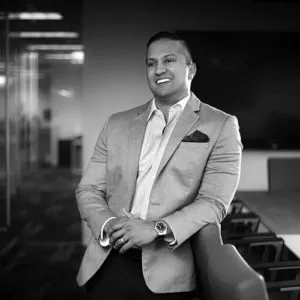
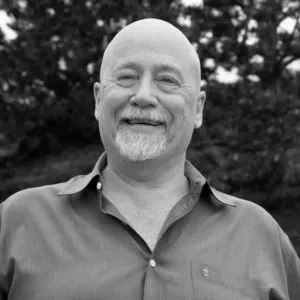 #3
#3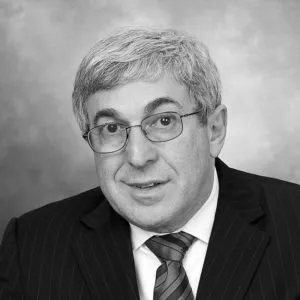 #4
#4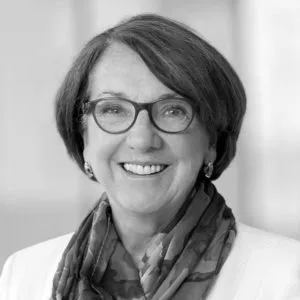 the advocates
the advocates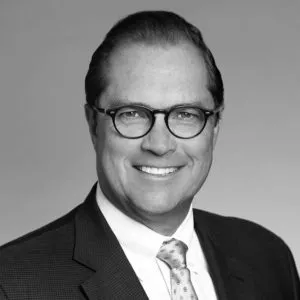
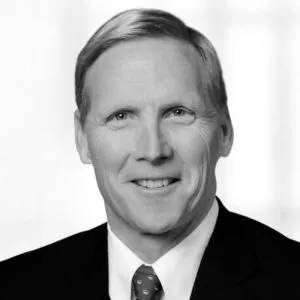 #6
#6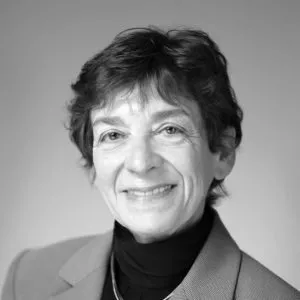 #7
#7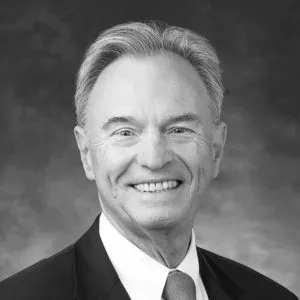 #8
#8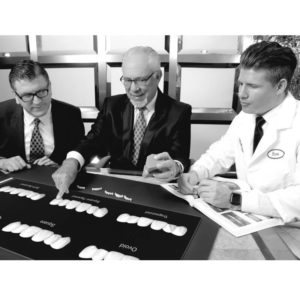 #9
#9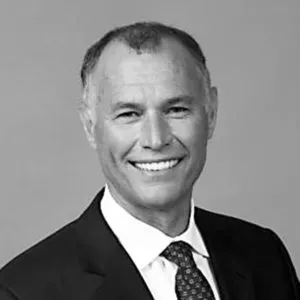 RICK WORKMAN
RICK WORKMAN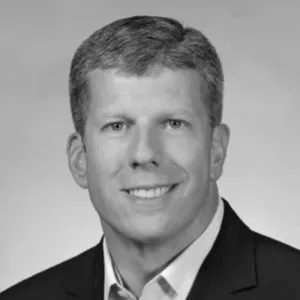 ROBERT FONTANA
ROBERT FONTANA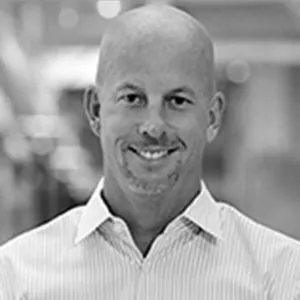 STEVE THORNE
STEVE THORNE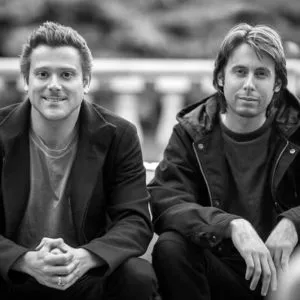 #11
#11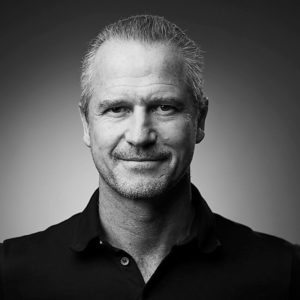 #12
#12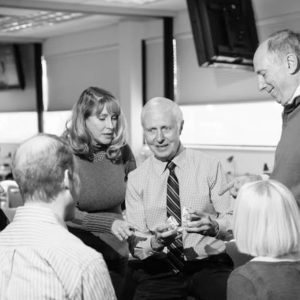 #13
#13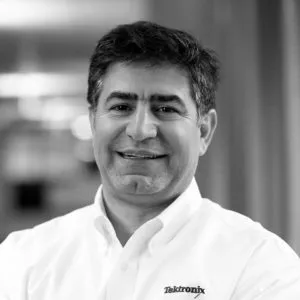
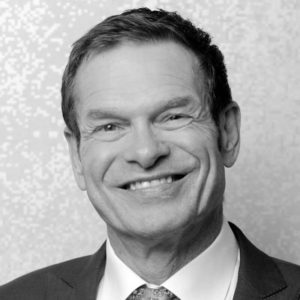 #17
#17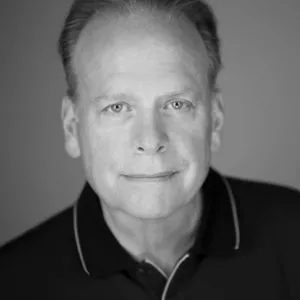 #18
#18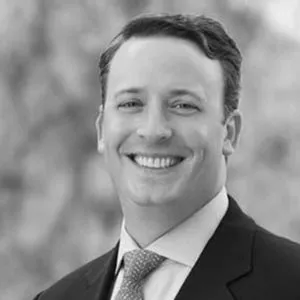 #19
#19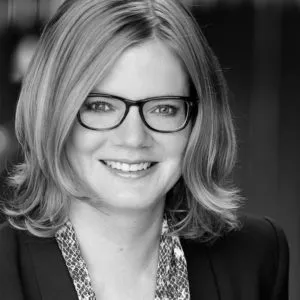 #20
#20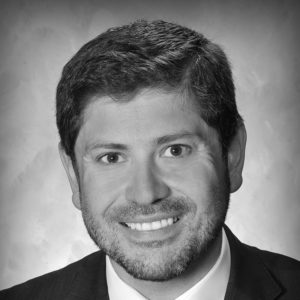 #21
#21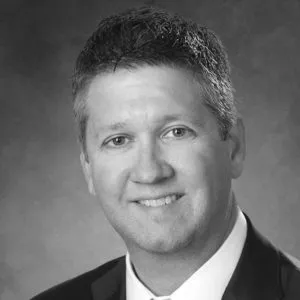 #22
#22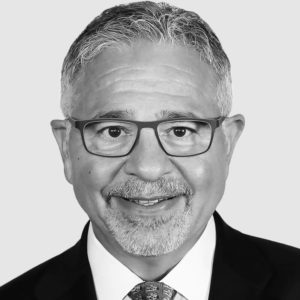 #23
#23 #24
#24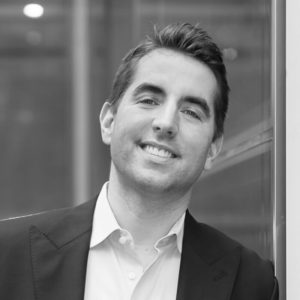 #25
#25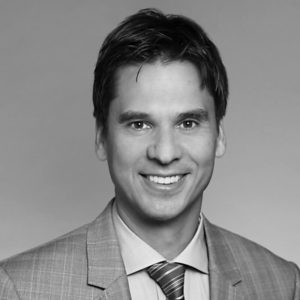 #29
#29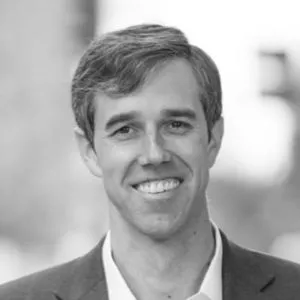 #30
#30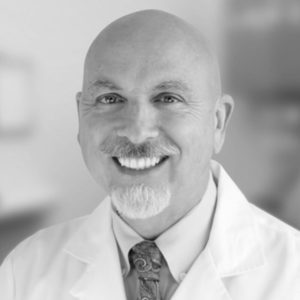 #31
#31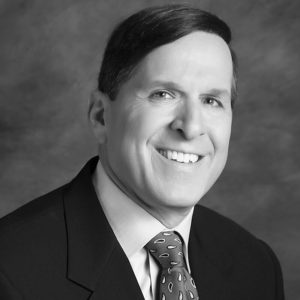 #32
#32